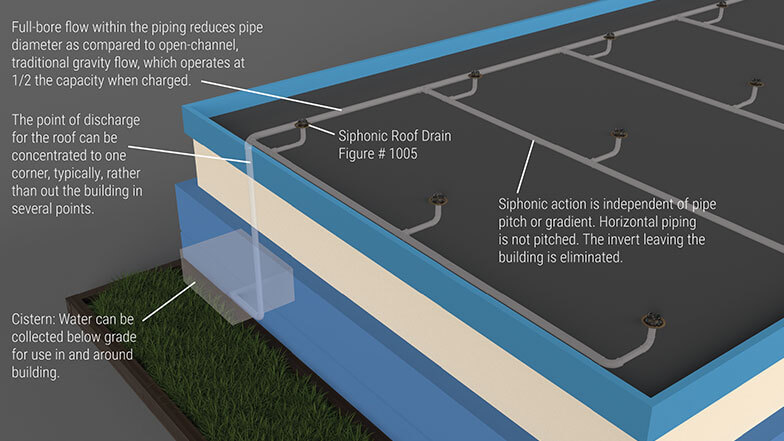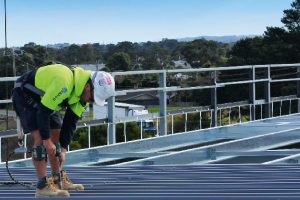Siphonic Roof Drainage Association

Siphonic systems run at higher capacity and higher velocity that a gravity system because the water collected from individual roof outlets is literally sucked along the collector pipe suspended in the space about 1 metre below the roof membrane or gutter sole level.
Siphonic roof drainage association. The srda promotes a wider understanding of the principles of siphonic drainage encourages best practice by suppliers and installers and provides a recognised platform for specifiers. Drainage of large roof surfaces requiring a minimum outflow capacity of 1 0 l s. Materials the majority of siphonic drainage systems in the uk use high density polyethylene hdpe pipework. The water is sucked or siphoned from the roof down into the drain at high velocity.
Unlike traditional roof drainage systems a siphonic system is designed to operate with the piping completely charged with water during a rainstorm. By contrast a fully engineered siphonic roof drainage system contains an anti vortex plate that acts as a baffle and prevents air and debris from entering the piping system at full flow allowing the pipes to completely fill up with water. Siphonic drainage systems can be used to drain a roof if the following criteria are met. Adequate difference in height of at least four metres between the roof and the buried drains.
The srda promotes a wider understanding of the principles of siphonic drainage encourages best practice by suppliers and installers and provides a recognised platform for specifiers. Hdpe can be connected using either electrofusion couplings which are heated by internal elements or by butt jointing where the cut ends of the pipe are melted and then forced together under pressure to make a joint.




































